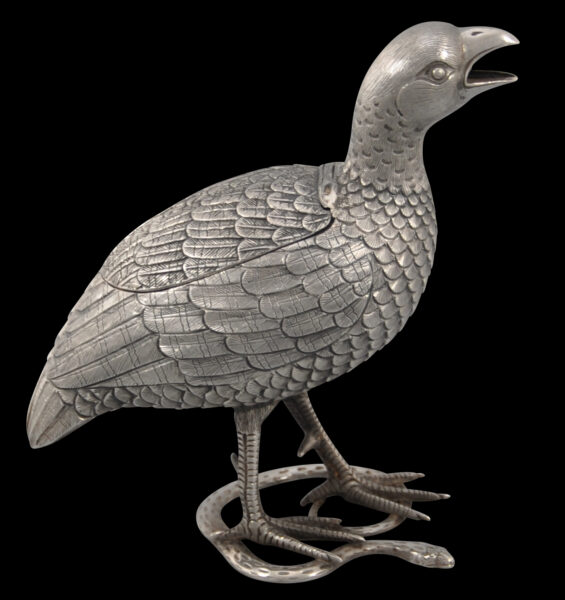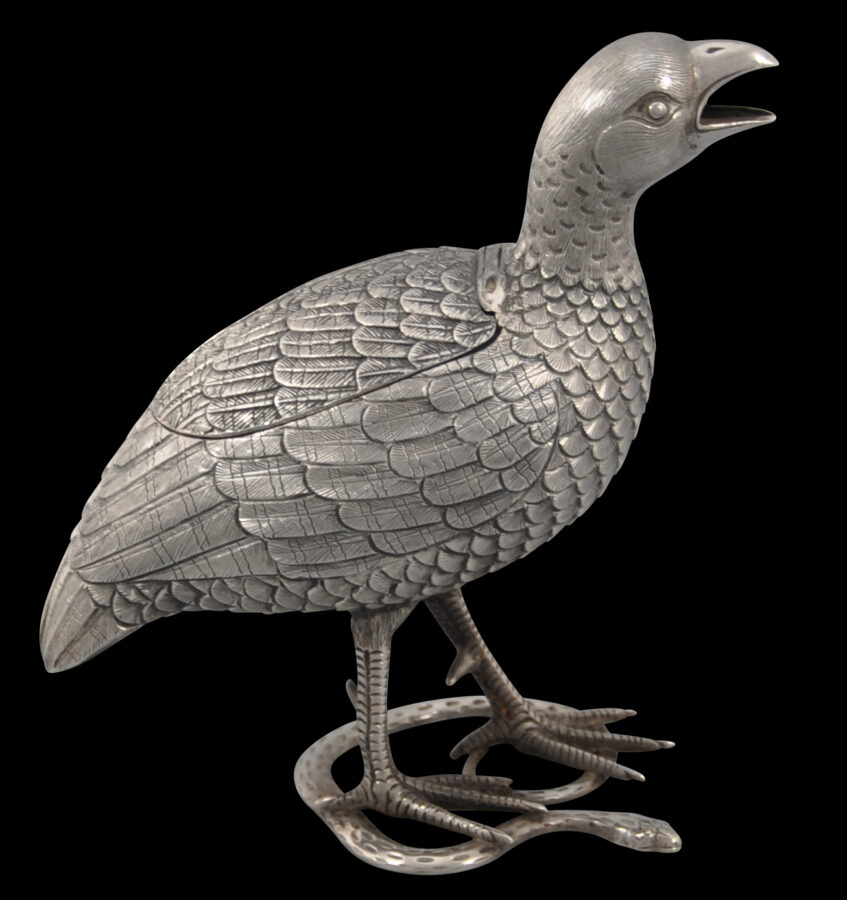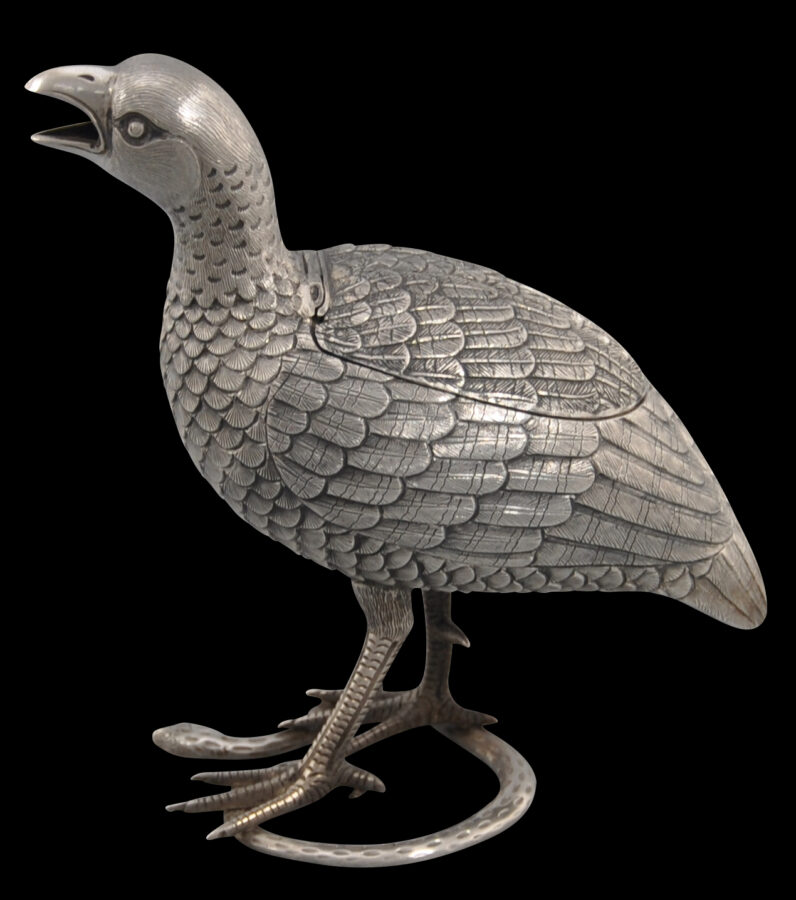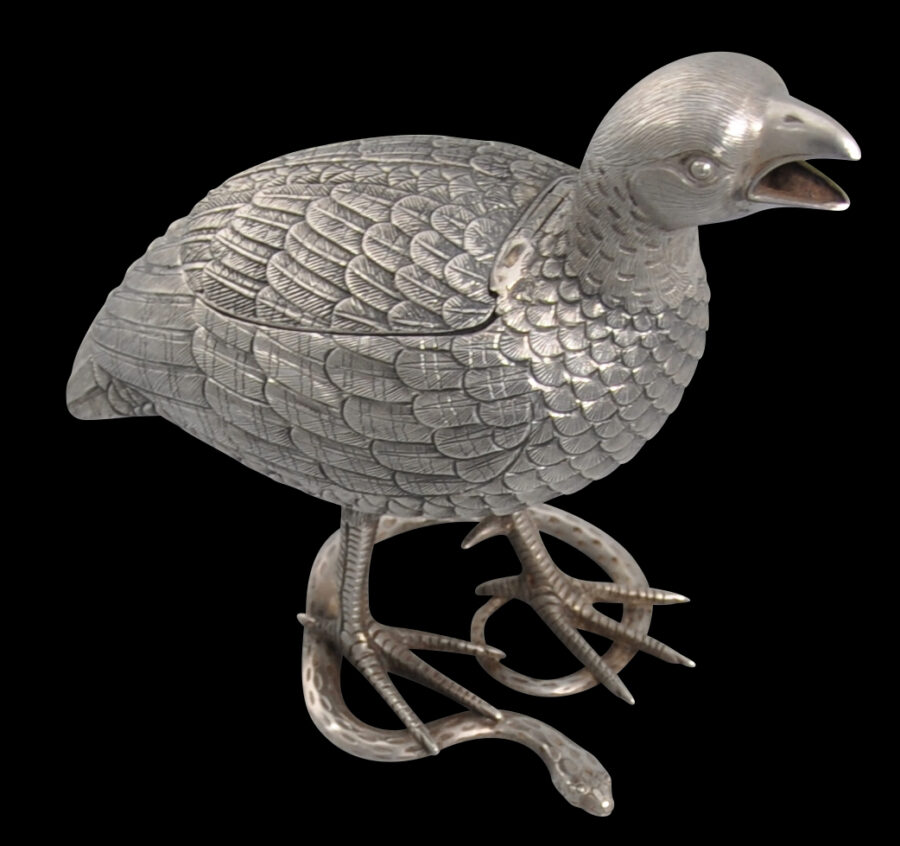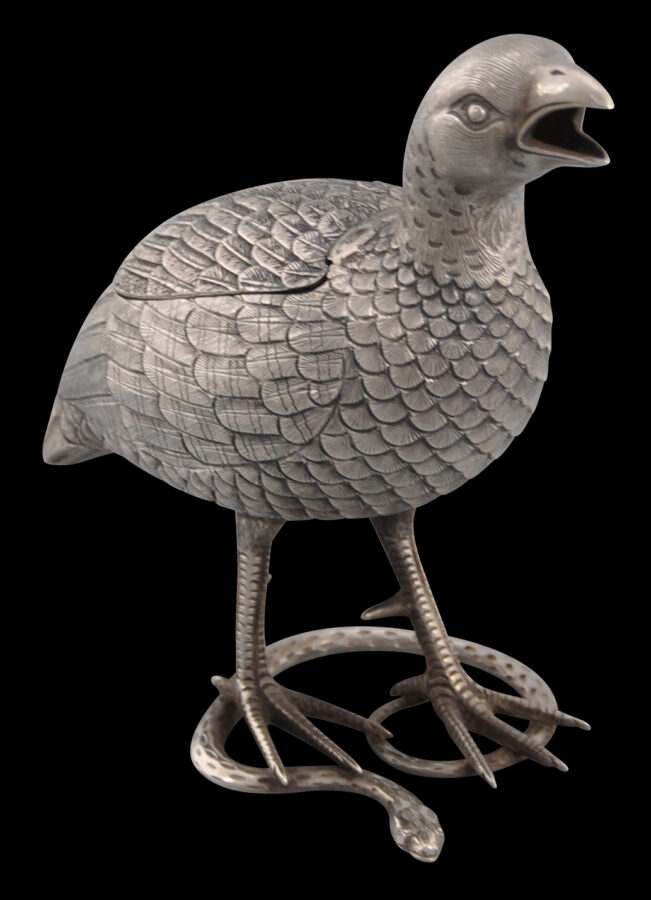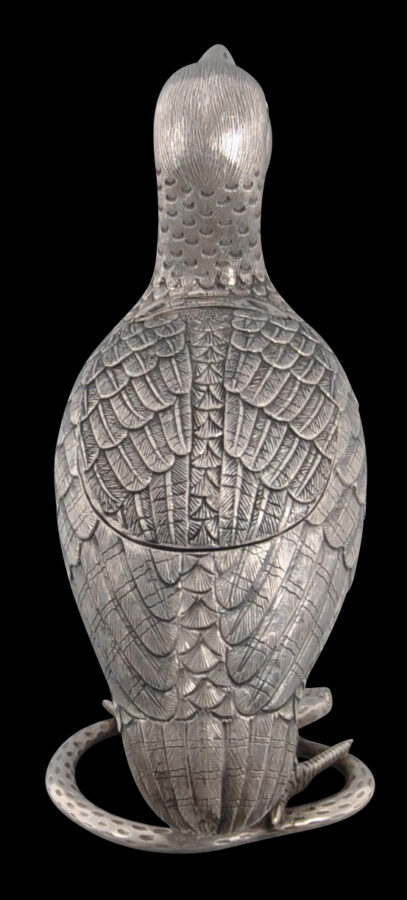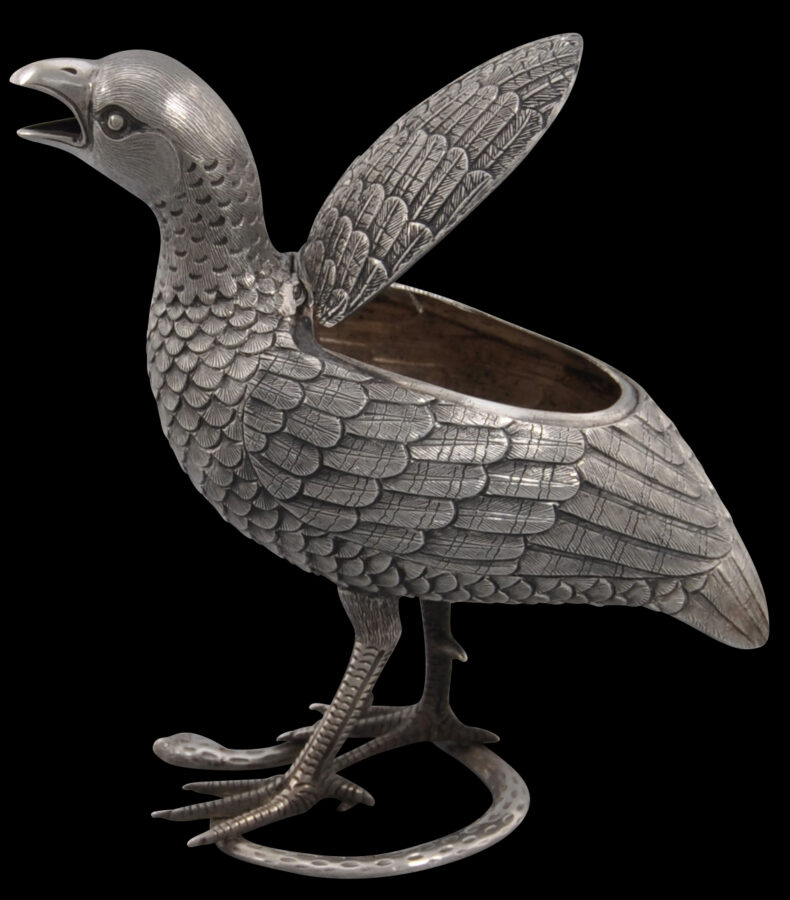This box or covered bowl most probably was part of a tea set. It is ingeniously shaped as a grey francolin (Francolinus francolinus) a bird that is similar to the European partridge but which is native to the more arid parts of the Indian sub-continent and which today happens to be the state bird of northern Haryana state. The bird has been realistically modelled, squawking and with its claws holding down a small, curled snake.
The feathers are finely rendered. The bird’s back comprises a hinged lid to reveal the interior.
Other examples of this type of bird-shaped box are stamped with the marks for Oomersi Mawji. It is highly likely that this item also is by Oomersi Mawji but simply was not stamped as such.
Oomersi Mawji was the pre-eminent Indian silversmith of his time. Together with his sons, he established a workshop in Kutch around 1860, where the local Muslim rulers who had the title ‘Maharao’ were an important source of patronage. Today, pieces by Oomersi Mawji. are keenly sought by collectors and museums worldwide.
Kutch silvermakers such as Oomersi Mawji developed a unique style of motifs with which they decorated most of the silver items they produced. Islamic-inspired scrolling flowers and foliage is the most frequently encountered motif, but small animal, bird and human motifs also were employed. The inspiration for these intricate motifs combined with fine and complex floral and foliage patterns almost certainly derives from the local tradition of intricate wall painting employed in Kutch palaces and public buildings. Known as Kamaagar art, the style evolved among the Kamaagar community of Muslims who lived in Kamaagar Falia in Bhuj (Tyabji, 2006, p. 90). Initially, the community was known for making decorated shields, but by the early to mid 19th century, the Kamagaars had established themselves as wall painters, painting intricate, even fussy, scenes of village life, animals, hunting scenes and the like accompanied by scrolling vegetal and floral borders.
The container here is in very fine condition.
References
Dehejia, V., Delight in Design: Indian Silver for the Raj, Mapin, 2008.
Tyabji, A., Bhuj: Art, Architecture, History, Mapin, 2006.
Wilkinson, W.R.T., Indian Silver 1858-1947, 1999.


